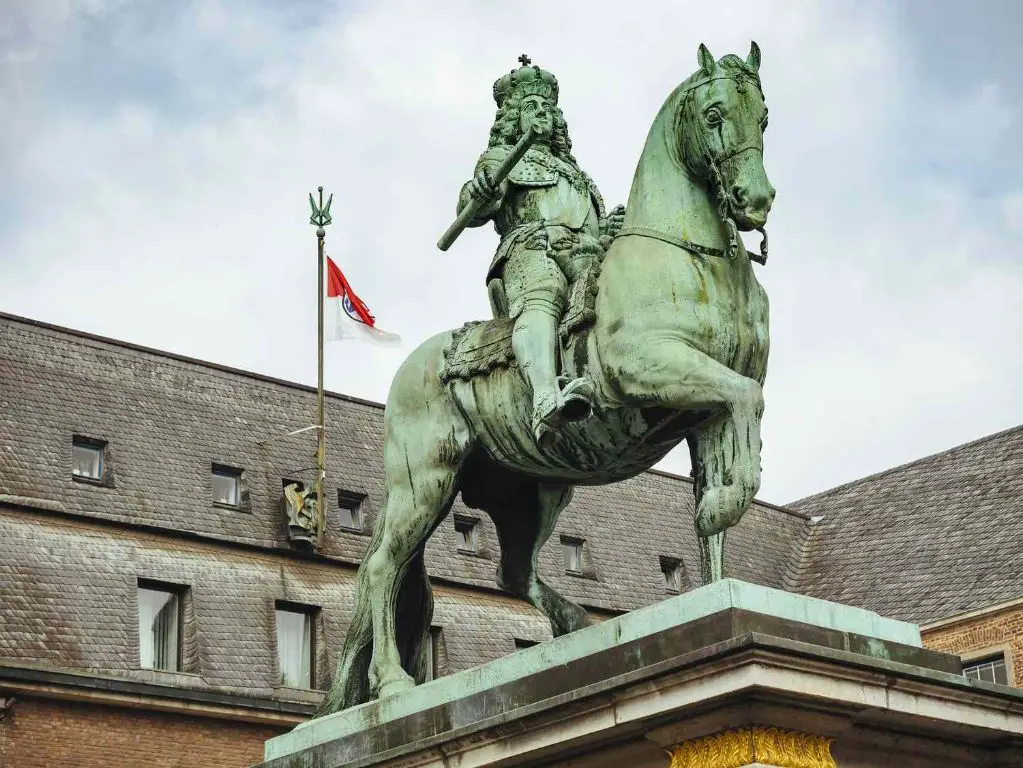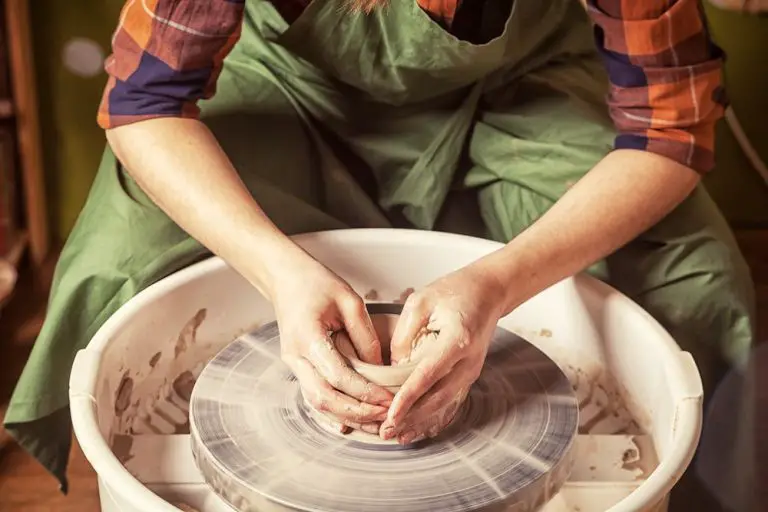What Does Green Patina Mean?
What is Patina?
Patina is a thin layer or coating that forms on the surface of a material like metal, stone, or glass over time due to oxidation, weathering, and chemical reactions. The word patina comes from the Latin word “patina” meaning “pan” or “dish.”
Patina forms naturally over time as a result of exposure to the elements like air, moisture, carbon dioxide, salt, acid rain, and chemicals. The process of patination leads to the formation of a thin film of various chemicals like oxides, carbonates, sulfides, or chlorides on the material’s surface which causes changes in color and texture. Patina can form in hours to centuries depending on the material and environmental conditions.
There are various types of patina formed based on the causative factors:
- Chemical patina – Formed by chemical reactions between a material’s surface and elements in the environment like oxygen, carbon dioxide, water, acids etc.
- Natural patina – Caused by long-term exposure to the weather and elements.
- Artificial patina – Intentionally created through chemical processes and treatments.
Common examples of patina include the green patina that forms on copper and bronze, the brown patina on iron or steel, the black patina on silver, and the golden-orange patina on bronze.
Green Patina
Green patina refers to the greenish coating or layer that forms on the surface of copper and bronze when they are exposed to air and moisture over a period of time. The green color is due to chemical reactions between the metal surface and oxygen, carbon dioxide, water, and chlorides or sulfides.
The most common green patina seen on copper and bronze is a result of the chemical process called verdigris. When copper is exposed to oxygen, moisture, carbon dioxide, and pollutants in the air, the copper reacts to form copper carbonate hydroxide – the blue-green patina known as verdigris. The main chemical reaction is:
2Cu + H2O + CO2 + O2 → Cu2(OH)2CO3
Here copper reacts with water, carbon dioxide and oxygen to form copper carbonate hydroxide. Over time, the patina layer builds up as more copper carbonate hydroxide is produced through this reaction. Exposure to acids, alkalis, sulfides and chlorides in the environment can modify the patina color from blue-green to green or black shades.
The green patina layer acts as a protection for the copper underneath from further corrosion. However, if moisture gets trapped under this patina layer, it can still corrode the metal over prolonged periods.
Applications of Green Patina

Green patina is often considered desirable for its aesthetic qualities. On copper sculptures and architectural elements, the green patination forms a natural looking aged surface that is considered attractive. The Statue of Liberty, for example, was designed to develop a patina over time that would complement the statue’s dignified appearance. Many artists also use patination techniques to give metal sculptures an antiqued green finish (https://gutterempirellc.com/will-my-copper-gutters-turn-green/).
In addition to its visual appeal, the patina layer provides a protective coating for copper surfaces. On copper roofing, a patina layer helps prevent further corrosion and damage from the elements. The verdigris also protects copper artifacts and antiques from degrading over time. The statue of Liberty’s patina, for instance, acts as a preservative shield against weathering and abrasion (https://guttertalks.com/do-copper-gutters-turn-green-unveiling-the-truth/).
Removing Green Patina
There are a few methods for removing green patina from copper when necessary. Mechanical abrasion techniques involve scrubbing to physically wipe away the patina layer. This can be done gently with a soft cloth, sponge or toothbrush using baking soda, lemon juice, vinegar or salt as a mild abrasive cleaner. More severe patina buildup may require gently scrubbing with steel wool or fine grit sandpaper.
Chemical cleaning methods are also effective for removing patina. You can use store-bought copper cleaners containing ammonia or make a homemade cleaner by mixing vinegar and salt. Submerging the copper item in the cleaning solution overnight helps lift the patina. Rinse thoroughly after cleaning.
Removing patina is only necessary if it has built up severely and become unsightly. For cleaning mild patina, gentle cleaning methods like rubbing with lemon and salt are preferable to completely stripping the patina layer. Patina removal should be avoided on antique or artistic copper pieces, as patina is often desirable on copper with historical or aesthetic value. See this article for tips on cleaning green patina from copper.
Preventing Patina Formation
While some may desire the patinated look, others wish to prevent or delay the formation of patina. There are several methods that can help slow down the patination process on copper and bronze:
Protective Coatings
Applying a clear protective coating like lacquer, wax, or a sealant can create a barrier between the metal’s surface and corrosive elements like oxygen, carbon dioxide, and moisture in the air. This helps inhibit the chemical reactions that produce patina. Frequent reapplication is needed as coatings wear off over time. Some common options include acrylic sprays, microcrystalline wax, and automotive sealants.
Proper Storage and Handling
Storing the copper or bronze object in a cool, dry place when not in use can minimize exposure to humidity, rain, ocean air, and perspiration from handling that all encourage patina formation. Wearing cotton gloves when handling can help avoid skin oils and acids from transferring to the surface.
Cautions
Completely preventing patina long-term is very difficult. Aging and darkening of the metal over time is inevitable. Aggressive cleaning or polishing to remove patina can permanently damage the item. It’s best to aim for just slowing down the natural aging process while avoiding harm.
For more tips, see: How to prevent patina on copper flashlight?
Replicating Green Patina
While natural patina forms over time, there are ways to artificially replicate the green patina effect on copper and bronze. This is done by using chemical solutions or heating methods to speed up the patination process.
Chemical solutions such as liver of sulfur, copper sulfate, ammonium sulfate, vinegar or salt water can be applied to the surface to oxidize the metal and produce green patina. The solutions react with the copper to form copper sulfate and copper carbonate compounds that provide the characteristic green coloring.
Heating methods involve using a torch, heat gun or oven to heat the metal surface. The heat speeds up the oxidization process, allowing patina to form more quickly. Repeated heating and cooling cycles will continue building up layers of patina.
The chemical approach tends to produce more uniform, consistent patina coverage. The heating technique provides a more natural, mottled patina effect. Using a combination of chemicals and heat can allow DIY patina creation while controlling the outcome.
Proper safety precautions should be taken when replicating patina at home, like working in a well-ventilated area and using protective equipment. With some experimentation, stunning artificial patinas can be achieved.
Notable Examples
Some of the most iconic buildings and structures around the world feature green patina copper elements. One of the most famous is the Statue of Liberty in New York City. Designed by Frédéric Auguste Bartholdi, the statue was constructed between 1875 and 1884 using copper sheets attached to an iron infrastructure. Over 130 years of exposure to the elements has resulted in the distinctive green patina patina that covers the statue today.
Another famous example is the Chrysler Building in New York City. When it was completed in 1930, it was the tallest building in the world and contained decorative elements covered in patinated copper. The 61st floor of the Chrysler Building contains copper gargoyles and eagles that have all developed a green patina over time.
Other notable buildings with iconic green patina copper include the copper domes of St. Peter’s Basilica in Vatican City, the Berlin Cathedral in Berlin, Germany, and the Old Post Office Tower in Chicago. Temples, churches, and historic buildings across Europe and Asia also often feature copper roofs and details that have aged into a greenish-blue patina through exposure to the elements over centuries.
Cultural Significance
Green patina has strong cultural associations with antiquity, longevity, and prestige across many cultures. The green coloration forms slowly over decades or centuries as bronze statues and artifacts are exposed to the elements. The green patina is therefore seen as a mark of surviving the test of time.
According to the National Museum of Asian Art, green evokes “fertile landscapes, growth and prosperity” in many cultures (Source). The verdigris green patina can symbolize this sense of growth, maturation, and antiquity. The Statue of Liberty, one of the most iconic symbols of democracy and freedom, owes much of its symbolic power to its aged green patina.
The green patina also has prestige associations, as it historically took great skill and expense to artificially replicate through metalwork techniques. Its rarity increased its value. The green patina on bronzes and copper artifacts represents the pinnacle of skilled craftsmanship.
Care and Maintenance
To properly care for items with a green patina, regular inspection and gentle cleaning is recommended. Check carefully for any cracks, damage or deterioration of the patina coating.
Clean gently with a soft cloth, mild soap and water. Avoid harsh abrasives or chemicals which could damage the patina layer. After cleaning, be sure to rinse and dry thoroughly.
Applying a protective coating like a wax or lacquer can help preserve the patina finish. This is especially useful for items exposed to weather or frequent handling. According to the Quick Care Guide for Bronze Sculptures (https://gibbybronze.com/quick-care-guide-for-bronze-sculptures-2/), applying a brown shoe polish can help revive a darkened patina.
Overall, handle all patinated items with care. With regular gentle cleaning and occasional protective coatings, the beautiful green patina can be maintained for many years.
FAQs
Green patina is a naturally occurring oxidation layer that forms on copper and bronze surfaces when exposed to outdoor elements over time. There are some common questions people have about green patina:
Is green patina bad for copper/bronze?
Green patina is not harmful to copper or bronze and can actually protect the metal underneath from further corrosion. The green color comes from copper carbonates and copper oxides that form a protective layer on the surface (Patina FAQs). So patina formation is a natural process that occurs as the metal interacts with the environment.
How can I remove or prevent green patina?
You can use a copper cleaner or metal polish containing ammonia to temporarily remove green patina. However it will return over time when exposed to moisture and air. To prevent patina formation, you can apply a clear lacquer or wax coating to shield the copper surface. But many appreciate the aged, aged green patina look (Patina FAQ).
Is artificially created patina the same?
Chemically induced patinas may look similar but do not offer the same protective qualities as naturally formed patina. Naturally occurring patina develops slowly in subtle layers creating a deeper, richer green color.
What are some other patina colors?
On copper, patina often appears green, but can also form as brown, black, blue, or red depending on environmental conditions. On bronze, common patina colors are green, brown, and black (Patina Brokers).




